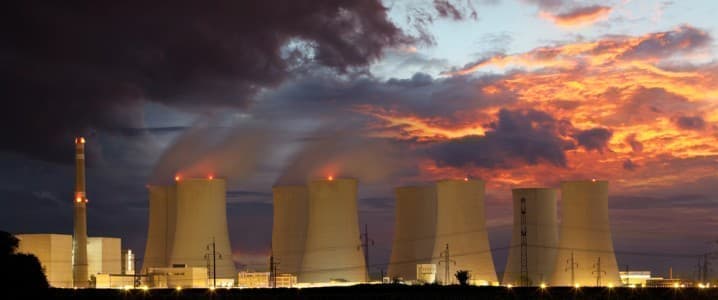While green hydrogen has received plenty of attention recently, pink hydrogen has been largely overlooked until now.
In 2021, low-emissions hydrogen production accounted for less than 1 percent of hydrogen output worldwide due to its high costs compared to grey and blue hydrogen.
Nuclear power has been gaining traction as governments focus on energy security, and as nuclear capacity rises we should see pink hydrogen production climb as well.
Everyone’s been talking about green hydrogen as a potential gas and fuel replacement as the world transitions away from fossil fuels. But one alternative, pink hydrogen, produced using nuclear power, has been largely overlooked. Governments worldwide are once again discussing nuclear power, with plans to construct several new power plants around the globe. This is largely in response to the Russia-Ukraine conflict and resulting energy insecurity, which has demonstrated the world’s ongoing reliance on a few select powers for their oil and gas needs. Many countries are looking to become more self-sufficient when it comes to energy, with a wider array of renewable energy options now on the table. So, could pink hydrogen be one of the major power sources of the future?
In recent years, companies have been racing to develop green hydrogen projects, to remain competitive, as more countries look for alternatives to natural gas, diesel, and jet fuel. Green hydrogen is widely seen as a renewable energy source that has the potential to replace fossil fuels as it can be applied for a number of uses. While grey and blue hydrogen use natural gas in the production process, green hydrogen relies on electrolysis powered by renewable energy sources, where water is split into hydrogen and oxygen. In contrast, pink hydrogen is produced using nuclear power, also making it carbon-free, although not technically green due to the classification of nuclear energy as non-renewable.
t present, most hydrogen production continues to rely on natural gas, as green hydrogen operations are extremely expensive to run in comparison. In 2021, low-emissions hydrogen production accounted for less than 1 percent of hydrogen output worldwide, according to the International Energy Agency (IEA). Rachael Rothman, the co-director of the Grantham Centre for Sustainable Futures at the University of Sheffield, believes pink hydrogen could offer a much-needed alternative to green hydrogen, supporting a more rapid expansion of the industry.
Rothman explained, “If you split ... water, you get hydrogen and oxygen.” She added, “But splitting water takes energy, so what pink hydrogen is about is splitting water using energy that has come from nuclear.” Therefore, “the whole system is low carbon, because … there’s no carbon in water … but also the energy source is also very low carbon because it’s nuclear.”
In the U.K., EDF Energy is discussing the idea of pink hydrogen production at its recently approved 3.2 GW Sizewell C nuclear plant. EDF states on its website, “At Sizewell C, we are exploring how we can produce and use hydrogen in several ways.” “Firstly, it could help lower emissions during the construction of the power station.” And “Secondly, once Sizewell C is operational, we hope to use some of the heat it generates (alongside electricity) to make hydrogen more efficiently,” it adds. The firm believes that hydrogen produced using nuclear power will play a major role in the energy transition.
In the U.S., the Department of Energy (DoE) is investing billions to help reduce the costs and increase the scale of clean hydrogen, looking to the country’s nuclear plants to support production. Traditional and advanced nuclear reactors can provide the constant heat and electricity required to produce low-emissions hydrogen. The DoE believes this could also help garner support for the development of new nuclear plants. It is estimated that a 1,000-MW reactor could support the production of 150,000 tonnes of hydrogen a year. This hydrogen could be used for fertilisers, oil refining, steel production, material handling equipment, fuel cell vehicles, and carbon-neutral synthetic fuels.
The International Atomic Energy Agency (IAEA) has developed a Hydrogen Economic Evaluation Program(HEEP) to support the development of pink hydrogen projects worldwide. It is a free tool that assesses the economies of large-scale pink hydrogen production. Meanwhile, the Nuclear Energy Agency, the Nuclear Energy Institute, the Idaho National Laboratory, the Emirates Nuclear Energy Corporation, the IAEA, and non-government members from Canada, Finland, France, Japan, Korea, the UAE, the UK, the US, contributed to the 2022 Nuclear-Hydrogen Digest: Nuclear Energy in the Hydrogen Economy to encourage the development of more pink hydrogen projects.
The major benefits of nuclear power use in hydrogen production include driving down production costs and reducing emissions. For pink hydrogen production, electricity would be generated using nuclear power to electrolyze water. While green hydrogen is produced using renewables at a 20 percent to 40 percent capacity factor, pink hydrogen would use nuclear power at a capacity factor of 90 percent, thereby reducing costs. Further, the carbon footprint of pink hydrogen is thought to be similar to that of green hydrogen using renewables.
Despite little talk about pink hydrogen at present, we are likely to see a significant rise in nuclear-powered hydrogen projects in the coming years, as governments once again look to increase their nuclear energy capacity as part of a green transition. Pink hydrogen will likely gain traction in much the same way as green hydrogen has, as energy firms and governments worldwide look for fossil fuel alternatives, with hydrogen being a versatile fuel for a variety of applications.
